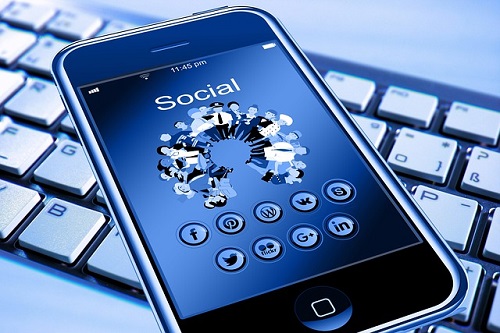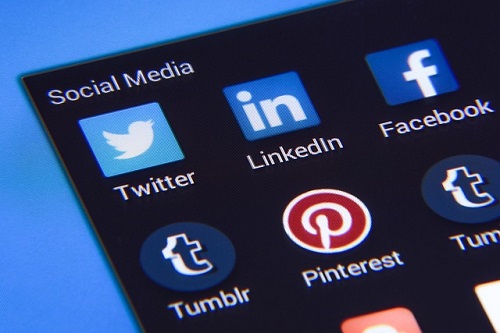The social media frenzy has taken a toll on our young generation. The term “social media frenzy” refers to the intense and sometimes overwhelming engagement with social media platforms, particularly among teenagers. Social media has greatly impacted teenagers either positively or negatively. However, the negative impacts outweigh the positive ones creating a concern to many parents.
The constant connectivity has led to teenagers today being more connected than ever before, thanks to smartphones and social media platforms. They can stay in touch with friends, share updates, and consume content around the clock, leading to a constant state of connectivity.
However, social media has changed their socialization views by fostering a culture of comparison, where teenagers compare themselves to their peers based on their posts, photos, and achievements. This can lead to feelings of inadequacy, low self-esteem, and anxiety, as teenagers perceive their own lives as inferior to the carefully curated images presented on social media.
Social media has also created a Fear of Missing Out (FOMO). The fear of missing out is a common experience among teenagers who feel pressure to be constantly online and engaged with social media to avoid missing out on important events, updates, or social interactions. This fear can contribute to compulsive checking of social media feeds and a reluctance to disconnect.
Teenagers and social media intertwined leads to a distorted perception of reality. The curated nature of social media can create a distorted perception of reality, where teenagers compare their own lives to idealized images and narratives presented by others. This can lead to feelings of inadequacy and dissatisfaction with one’s own life.
Another constant fear among parents with teenagers is cyberbullying syndrome. Social media platforms can be breeding grounds for cyberbullying, where teenagers experience harassment, teasing, or exclusion online. Cyberbullying can have serious consequences for teenagers’ mental health, leading to depression, anxiety, and even suicidal thoughts.
The impact on mental health has created more tension among parents. Research has shown a correlation between heavy social media use and poor mental health outcomes among teenagers, including higher rates of depression, anxiety, loneliness, and sleep disturbances. Excessive time spent on social media can disrupt teenagers’ real-life social interactions and contribute to feelings of isolation.
Additionally, it has led to addictive behaviors. Social media platforms are designed to be engaging and addictive, with features such as likes, comments, and notifications that trigger dopamine release in the brain. Teenagers may develop addictive behaviors around social media, spending excessive amounts of time online at the expense of other activities and responsibilities.
Social media has in general created privacy and safety concerns. Teenagers may not fully understand the implications of sharing personal information online, leading to privacy and safety concerns. They may be vulnerable to online predators, identity theft, or reputation damage if they share sensitive information or engage in risky behaviors online. However, most teenagers do not care what and to whom they share information, as they are struggling to reach out, get fame, create content, and remain relevant on media platforms.

How to Set Limits for Teenagers on Social Media
Setting limits for teenagers on social media can help promote healthy usage habits and mitigate potential negative effects. Here are some steps you can take:
Establish Clear Rules and Expectations: Sit down with your teenager and discuss your concerns about social media usage. Together, establish clear rules and expectations regarding when, where, and how they can use social media. Make sure they understand the reasons behind the rules.
Set Screen Time Limits: Determine specific time limits for social media usage daily or weekly. Encourage your teenager to engage in various offline activities, such as hobbies, sports, or spending time with family and friends. Outdoor activities will occupy their mind and give them a rest from social media.
Create Tech-Free Zones and Times: Designate certain areas of the house, such as bedrooms or the dinner table, as tech-free zones. Establish specific times, such as during meals or before bedtime, when social media usage is not allowed in and around the house. Let them understand that if it is meal time, family time or prayer time; no phones, headphones or laptops.
Use Parental Controls: Take advantage of parental control features on social media platforms and devices to monitor and manage your teenager’s online activity. These features allow you to set restrictions on screen time, block inappropriate content, and monitor their interactions. The features allow you to control the teenager even when not around them all the time.
Use parental controls to monitor their online activity. Stay informed about your teenager’s online activity by periodically checking their social media accounts and browsing history. Respect their privacy, but also ensure they understand that you’re there to provide guidance and support.
Lead by Example: Model healthy digital behavior by demonstrating responsible and balanced use of technology yourself. Show your teenager that it’s possible to enjoy social media in moderation while prioritizing offline activities and face-to-face interactions. If a teenager realizes that a parent devotes more of their time to social media, then they will know that there is no crime in using social media anytime, anywhere.
Encourage Open Communication: Maintain open lines of communication with your teenager about their social media experiences. Encourage them to talk to you if they encounter any issues or concerns online, such as cyberbullying or inappropriate content. Make them feel free to share unknown information that they encounter on social media whether inappropriate or not.
Encourage Positive Online Interactions: Encourage your teenager to utilize social media as a platform for fostering positive interactions and meaningful connections with others. Engage in open discussions regarding the significance of demonstrating kindness, respect, and responsibility in their online presence.
Educate Them About Online Safety: It is important to have open and detailed discussions with your teenager about the significance of maintaining online privacy, ensuring security, and practicing good digital citizenship. Make sure to cover crucial topics like safeguarding personal information, being cautious about interacting with strangers online, and being able to identify and avoid online scams or potential threats.
Be Flexible and Adapt: Be willing to adjust your approach to setting limits on social media as your teenager grows and matures. Regularly revisit and revise the rules based on their behavior, needs, and feedback. Do not be rigid to technological advancements and the digital world. The world is changing and they will still need social media either way. The sooner a parent adapts to the changes the better for their child.

Take Away
Overall, while social media can offer opportunities for connection, self-expression, and entertainment, teenagers need to use these platforms mindfully and responsibly, with guidance and support from parents, caregivers, and educators. Balancing online and offline activities and promoting healthy digital habits can help mitigate the negative impacts of social media frenzy on teenagers’ well-being.
By establishing specific boundaries and promoting transparent dialogue, you can support your adolescent in cultivating positive routines and effectively managing the intricacies of social media use.

